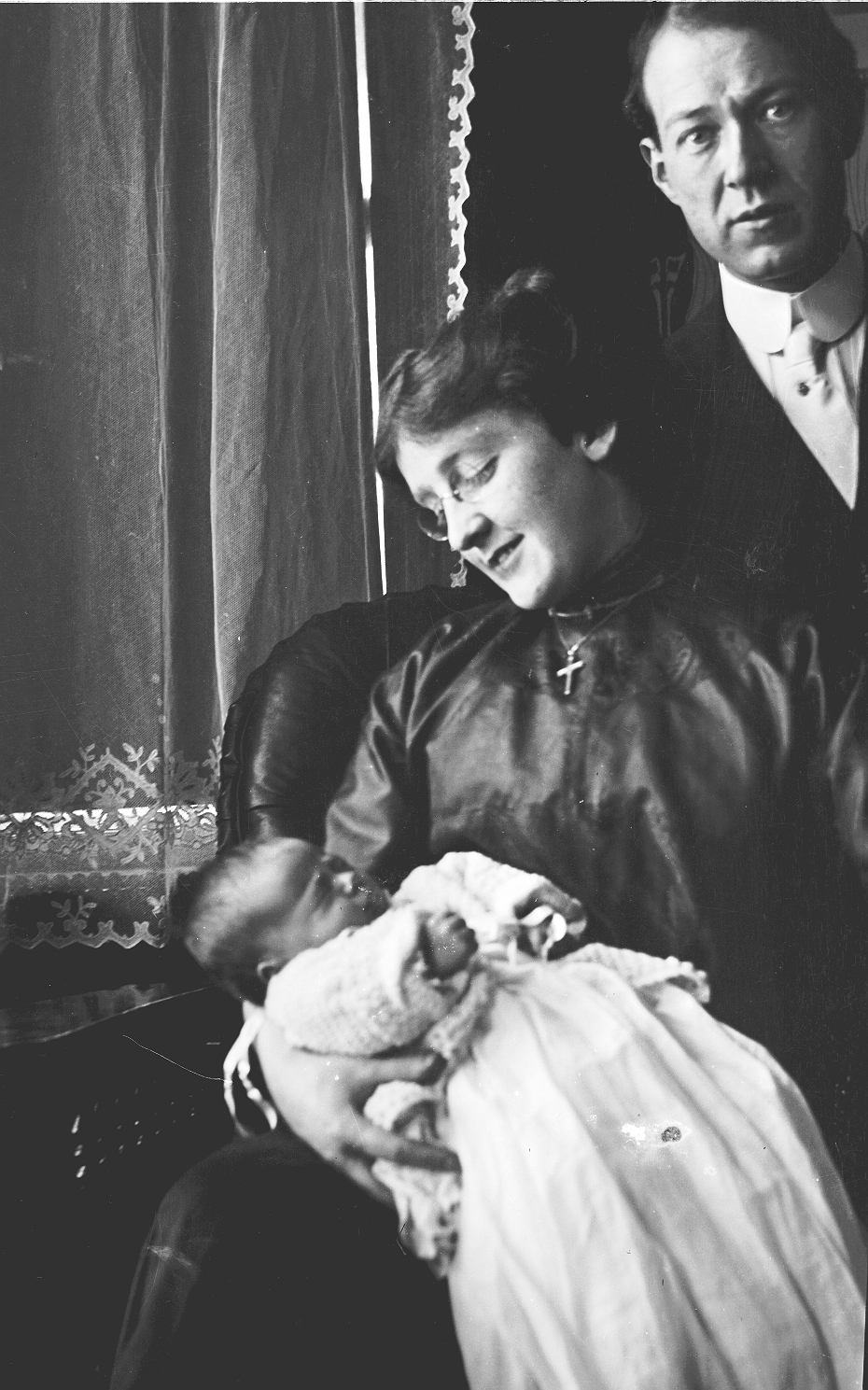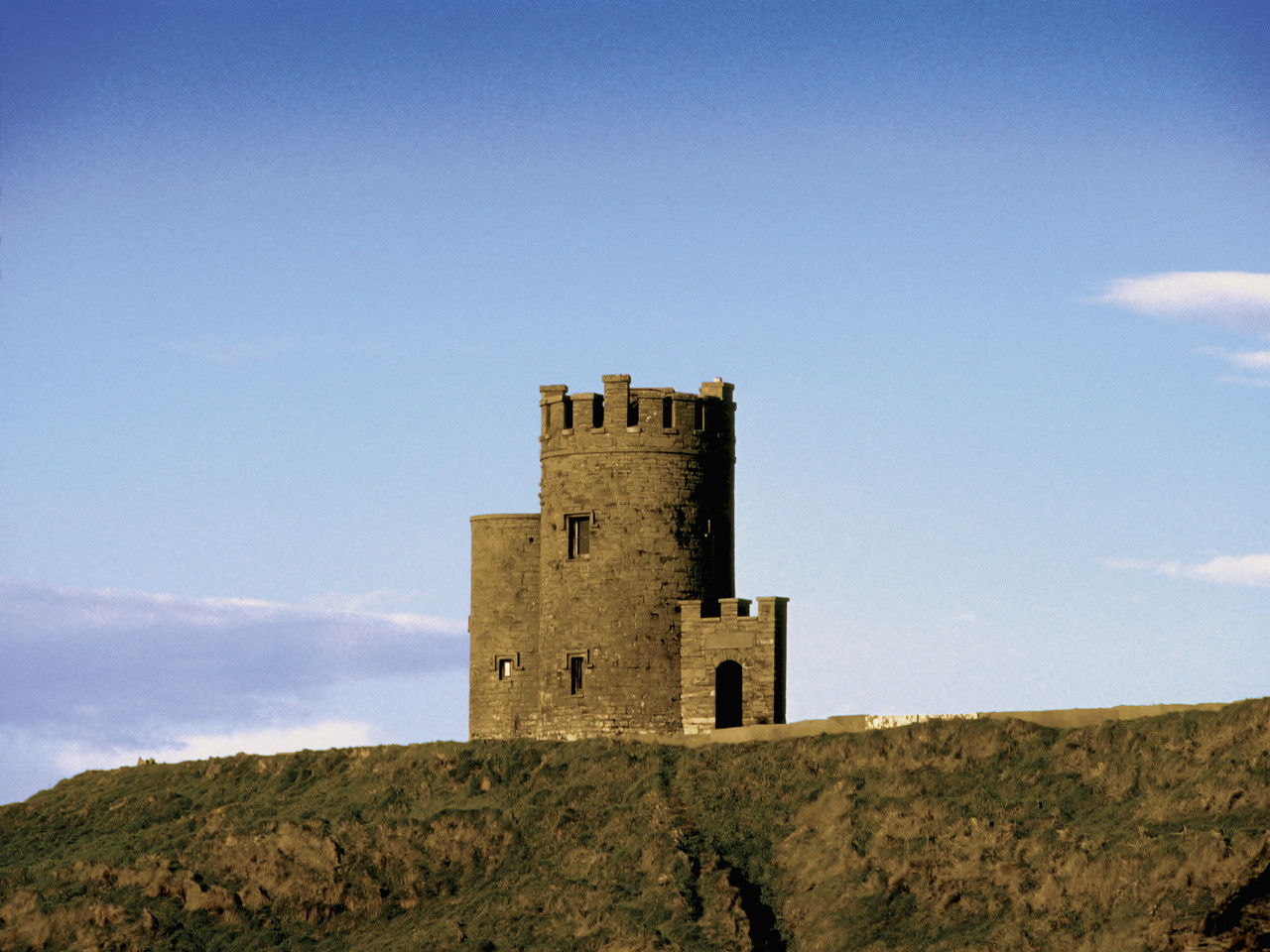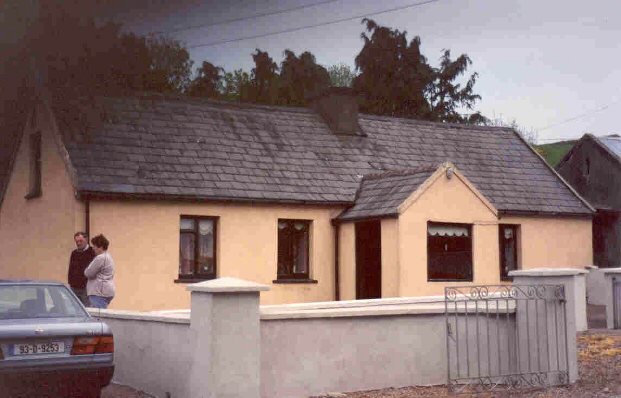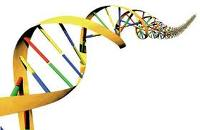Module Nine: Working with Other Resources
Working with Other Resources
In this module
you will learn about additional Irish record sources
which may be used in your research.
"I saw behind me those who had gone, and before me those who are to come. I looked back and saw my father, and his father, and all our fathers, and in front to see my son, and his son, and the sons upon sons beyond. And their eyes were my eyes."
- Richard Llewellyn

Where Else Can I Search?
We have looked at the most important records in Irish research: Civil registration, birth records, U.S. and immigration records, census records, Griffith's Valuation, Tithe Applotment, Valuation Lists and other land records. What are the other resources that we can use to continue our genealogical research?
Other resources include:
- Newspapers
- Gravestones and monumental inscriptions
- Family histories, local histories and historians
- Wills
- Estate records
- Contacting family in Ireland
- Molecular genealogy
These are more advanced subjects in Irish genealogy, but we will look at each one briefly.
Newspapers may contain genealogical information, but their availability makes them difficult to use. More are becoming available online, and it is worthwhile to do a Google search for your ancestor and location. "In comparison to other countries, Ireland was slow in developing a newspaper industry. An occasional newspaper was printed in the mid-1600s. Ireland's major city and provincial newspapers began in the 1700s. Town newspapers began by the 1800s" (Family History Library, 1993. Research Outline: Ireland)
Read
more about Irish newspapers on FamilySearch.
Finding Information on Gravestones
Gravestones, or monumental inscriptions, can sometimes be good sources of genealogical information. The stone may record date of birth, death, and family relationships. More are being transcribed and are available on the web.
"Gravestone inscriptions can be a useful source of family history information. Gravestones may give birth, marriage, and death information. They may also give clues about military service, occupation, or family members buried in the same area. Sometimes they give more information than the parish burial register or civil certificate of death. Gravestone inscriptions are especially helpful for identifying ancestors who are not recorded in other existing records" (Family History Library (1993). Research Outline: Ireland).
The History from Headstones website provides access to a searchable database of gravestone inscriptions in Ulster (Northern Ireland).
Other inscriptions may be found online by geographic area. Do a Google search to see if gravestone inscriptions have been recorded for your parish.
Important information about your ancestors may be found in family histories and local histories. Family histories or biographies may have information about the ancestor's place of origin in Ireland, and relationships that can lead you to additional information. Local histories may contain information about your ancestor, and may also provide valuable information about the area and social and economic conditions of the area.
Grenham's Tracing Your Irish Ancestors, has information on family and local histories, organized by county.
Information about family histories related to Ireland can be found on the FamilySearch wiki website.
It is worthwhile to check on local history groups for your area of interest. These groups work to preserve local records, and they may publish magazines with valuable genealogical information. On a trip to Ireland, I was able to meet with local historians, including a shanachie (Irish storyteller/historian), who provided valuable information about the area, my familly, and local legends.
Some local history groups are listed at Irish Genealogy Toolkit.
Using Irish Wills
Most original Irish wills were destroyed in the Public Records Office in 1922, but many copies and abstracts exist. Diocesan and prerogative indexes are available on microfilm from the LDS Family History Library. All of the prerogative wills (1537-1800) were abstracted by Sir William Betham, and the Betham extracts are also available at the Family History Library. As you may imagine, Irish wills are more common for the wealthy, and less common for the average Irish farmer. The textbook for this course, Grenham's Tracing Your Irish Ancestors, has a chapter on wills which provides extensive information on the subject.
The FamilySearch wiki website gives a good description of available Irish wills.
Ancestry.com has access to a database of Irish wills at www.ancestry.com.
Using Irish Prison Records
Over 3.5 million Irish prison records are available online at www.findmypast.ie. These records are for the period from 1790 to 1924. Crimes ranged from stealing potatoes to drunkenness to assault. Civil disobedience was common enough that most families may find information here. For more information about the contents of these prison records, read Irish Prison Records.
Using Irish Estate Records
Irish estate records are the records of landed Irish gentry. These records may contain information about farm laborers and craftsmen. "Estate records are another valuable set of property records. Most Irish lived on large estates owned by a minority of the population. Land owners usually hired agents to keep records of transactions involving their families and/or their tenants. Estate records vary in content and duration and may include deeds, leases, rent rolls, and account books, among other records." (Family History Library, 1993. Research Outline: Ireland). To find the estate records, you need to know the name of the estate holder. This information can be found on Griffith's Valuation.
"Estate
records can be difficult to track down and,
where they survive, are of variable quality
but they can provide spectacularly good
detail. These records offer
the best opportunity to trace Irish
ancestors into the 18th and even the 17th
centuries. They include information about
the wealthy families who once owned great
swathes of Ireland. Genealogy researchers
find them useful because these families
employed vast numbers of retainers, i.e.,
domestic staff, farm hands, craftsmen, etc
and were also landlords, granting leases to
tenant farmers and labourers." (http://www.irish-genealogy-toolkit.com/Ireland-genealogy.html)

You
can find a list of
landholders in
Ireland in 1876
online. In
1876 a list of
landowners who
held at least one
acre of land was
published. The
survey had been
commissioned in
1873 by the Local
Government Board
and required the
Poor Law Unions
across Ireland to
gather together
lists of
landowners from
local rate books.
The last of the
returns to the
Board was dated
November 1872.
When collated,
some 32,614 owners
were listed
alphabetically by
province and
county, alongside
details of the
extent of their
land and its
current valuation.
The 1876
list is
available, free
online.
What
if your family were not
landholders? An
interesting article on Chasing
the Poor and the
Landless is
found online.
Contacting
Family in Ireland
If you have been able to find the location for your ancestors, you may be able to contact living relatives in Ireland. You can use a Google search, Irish phone book search, or send letters or e-mails to individuals with the same last name in the same parish in Ireland.
If you have followed your
ancestor's plot of land in Griffith's Valuation, the
subsequent Valuation Lists, and found the current occupier
at the Valuation Office, then you may be able to see if
relatives still live in the same parish.

Understanding Molecular
Genealogy

Molecular genealogy is the use of DNA testing to provide information about your ancestry. It is often used when traditional genealogical research hits a brick wall. Its use has been especially valueable to African Americans seeking information about the location of their ancestral homeland.
In Smolenyak's (2004) Trace
Your Roots with DNA, the author explains "How then
can we use DNA to trace our genealogy? We know that all of
our DNA came from somewhere, but that's not much help if
we can't put our finger on the right slot in our family
tree. Fortunately, there are two kinds of DNA that follow
a straight line instead of a meandering path - DNA found
on the Y chromosome and the mitochondrial DNA. By a happy
coincidence, the straight line for the Y chromosome is the
same as the surname line in many cultures, and the
straight line for mtDNA tracks the often-elusive female
line." In other words, DNA testing can be conducted on the
straight paternal line (father to father), and the
straight maternal line (mother to mother). In addition,
admixture tests can give you an overall percentage of your
genetic ancestry.
To learn more about molecular genealogy and DNA, read http://www.irish-genealogy-toolkit.com/genealogy-dna-testing.html.
Recommended reading on the subject is Megan Smolenyak's (2004) Trace Your Roots with DNA; and Henry Louis Gates' (2010) Faces of America. Faces of America is also available online as a DVD of the PBS series of the same name.
Molecular genealogy is a new
and developing subject, which could be the subject of a
course itself. Testing is available through several
companies online, including Ancestry.com. There is an
interesting project to find the descendents of Niall
of the Nine Hostages, a fifth century High King of
Ireland.
Ulster Scots may be interested
in the DNA project of the Ulster
Heritage DNA Project.
Assignment One: Select one of the other resources listed above, and see if it can be useful to you in finding your Irish ancestors.